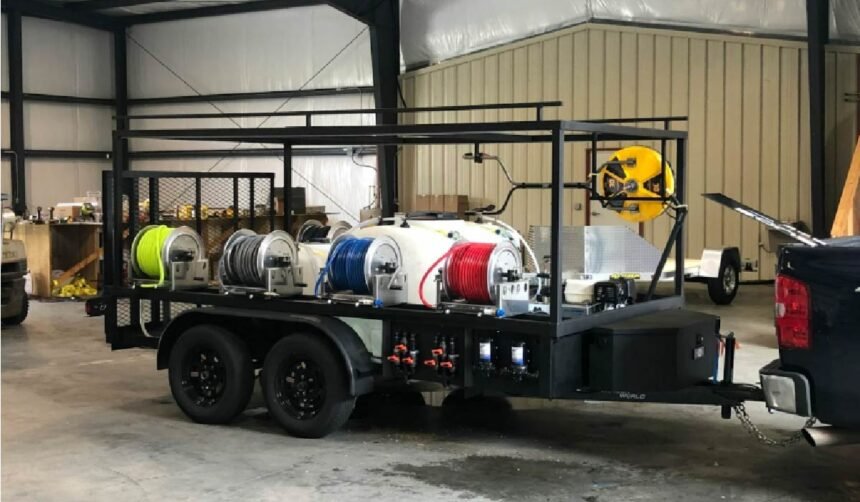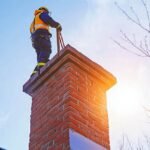When it comes to exterior cleaning, wood surfaces like decks, fences, siding, and outdoor furniture often present a unique challenge. Unlike concrete or brick, wood is porous, softer, and highly susceptible to damage if not handled properly. For professional restorers, the secret to a successful project lies not only in the tools but also in the careful use of wood cleaning chemicals. Combined with the right equipment such as Pressure Washing Skids or Power Wash Skids, these chemicals can transform weathered wood into surfaces that look nearly brand new.
In this article, we’ll dive into the best practices for using wood cleaning chemicals, their role in restoration projects, and how professionals can optimize their cleaning setups for both efficiency and long-term results.
Why Wood Requires Specialized Cleaning
Wood is an organic material that expands, contracts, and reacts with its environment. Over time, exposure to sun, rain, and pollutants leads to discoloration, mold growth, and surface degradation. While blasting away stains with high-pressure water might seem like the easiest option, it can actually damage the fibers of the wood, causing gouges and uneven wear.
This is where wood cleaning chemicals come into play. These specialized solutions are designed to penetrate deep into the wood’s surface, loosening dirt, mold, algae, and tannin stains without relying on high water pressure. The result is a cleaner, restored surface that is safe for sealing or staining afterward.
Common Types of Wood Cleaning Chemicals
Professional restorers typically work with a few primary types of chemicals for wood cleaning:
- Alkaline Cleaners
- Great for removing dirt, mold, and algae.
- Often used as the “first step” in a two-step cleaning process.
- Oxalic Acid Cleaners
- Restore the natural color of wood after alkaline cleaning.
- Excellent for removing tannin stains and rust marks.
- Biodegradable Wood Cleaners
- Eco-friendly solutions that minimize environmental impact.
- A preferred choice for contractors working in residential neighborhoods.
- Strippers
- Used for removing old sealants or stains before reapplication.
- Require precise application and careful rinsing.
By combining these products strategically, professional contractors ensure wood surfaces are not just clean but also prepped for protective treatments.
Pairing Wood Cleaning Chemicals with the Right Equipment
The choice of equipment significantly impacts how effective and safe wood restoration projects are. This is where Pressure Washing Skids and Power Wash Skids come into play.
- Pressure Washing Skids provide the flexibility of mobile, high-performance cleaning setups. They allow contractors to regulate pressure levels carefully, ensuring delicate wood surfaces aren’t damaged during rinsing.
- Power Wash Skids, on the other hand, are more heavy-duty and versatile. While often associated with tougher surfaces like concrete, they can also be adapted with lower pressure settings and chemical application systems to handle wood cleaning projects.
The combination of the right skid and wood cleaning chemicals allows for maximum efficiency and professional-grade results.
Best Practices for Professional Restorers
To get the best results while ensuring the wood’s integrity, here are some proven best practices:
1. Test Before You Apply
Always test wood cleaning chemicals on a small, inconspicuous section of the wood. This helps ensure compatibility and prevents unexpected discoloration.
2. Use the Right Dilution
Over-concentrated solutions can damage wood fibers, while diluted mixes may fail to clean effectively. Following manufacturer guidelines is essential.
3. Apply Evenly with Low Pressure
Instead of relying on raw water pressure, let the chemicals do the work. Apply them evenly using a soft wash or downstream injection system.
4. Neutralize After Cleaning
If you use alkaline cleaners, always follow up with an acid neutralizer (like oxalic acid). This balances the wood’s pH and restores its natural color.
5. Rinse Thoroughly
Residual chemicals left on wood can interfere with future staining or sealing. A thorough rinse at low pressure ensures the surface is safe for the next step.
6. Protect Surrounding Areas
Chemicals can affect nearby plants, glass, or painted surfaces. Use protective coverings and pre-wet plants to reduce risk.
Long-Term Benefits of Proper Chemical Use
When contractors follow these best practices, the benefits extend far beyond just the immediate look of the wood:
- Enhanced Appearance: Restored wood looks natural, vibrant, and ready for protective coatings.
- Increased Lifespan: Proper cleaning prevents decay, mold growth, and damage over time.
- Satisfied Clients: Customers notice the difference between quick pressure washing and professional chemical-aided restoration.
- Business Growth: Using advanced methods and tools like Pressure Washing Skids helps contractors stand out in a competitive market.
Final Thoughts
For professional restorers, wood cleaning isn’t just about removing dirt—it’s about preserving the natural beauty and integrity of one of the most beloved building materials. The careful use of wood cleaning chemicals, combined with reliable equipment such as Pressure Washing Skids and Power Wash Skids, ensures that projects are completed safely, effectively, and with long-lasting results.
By following best practices, contractors can deliver top-quality services, build trust with clients, and position themselves as experts in wood restoration. In an industry that thrives on results, the right chemicals and equipment make all the difference.







